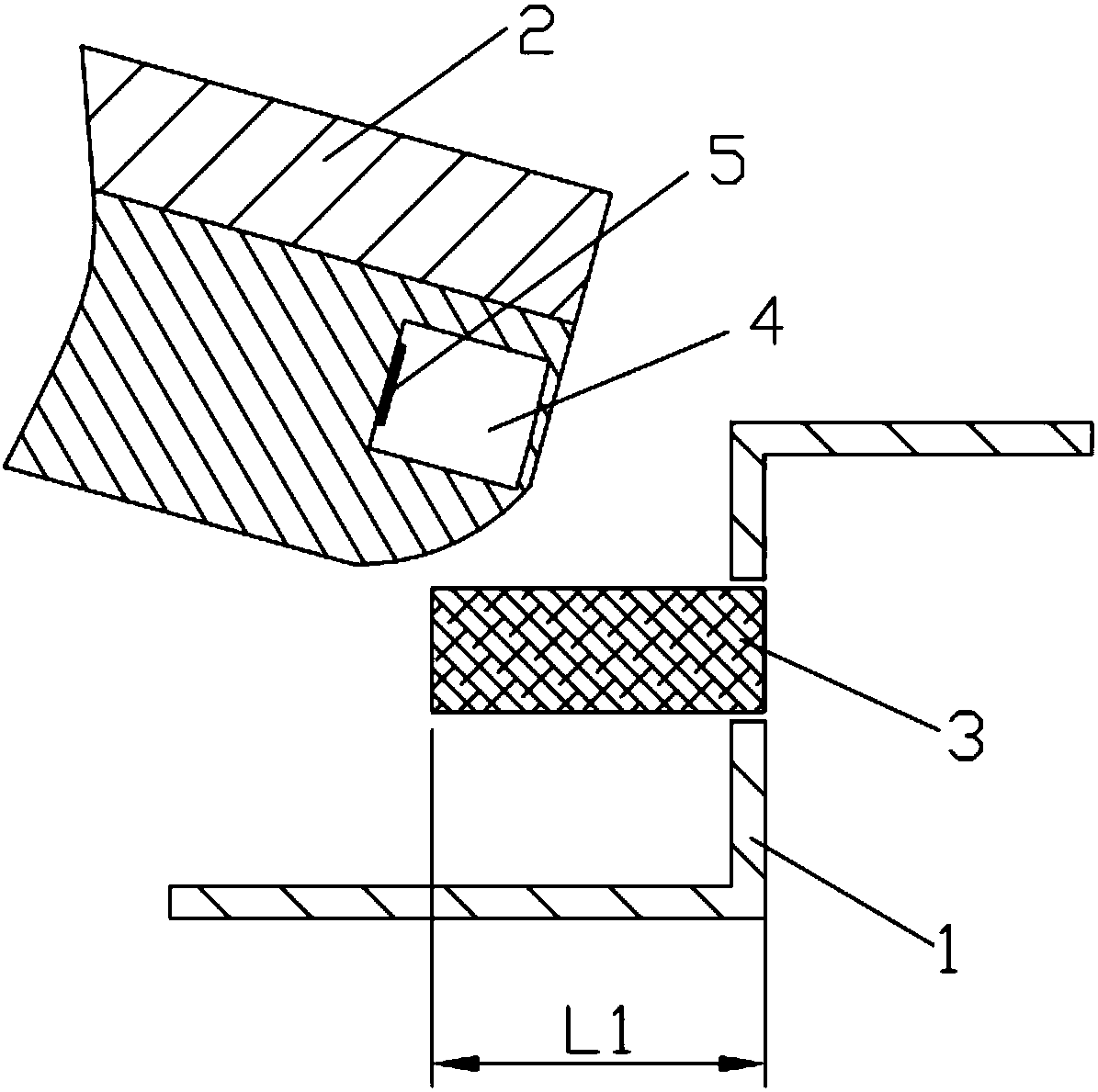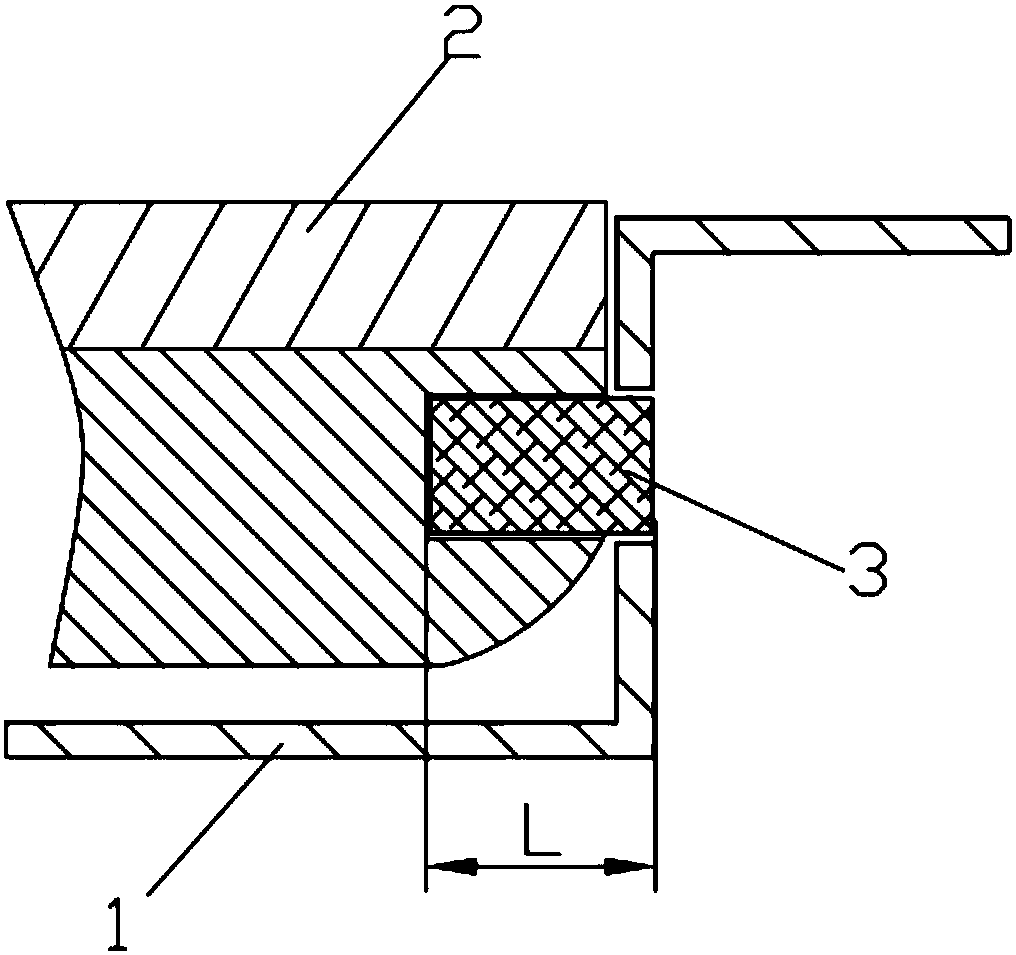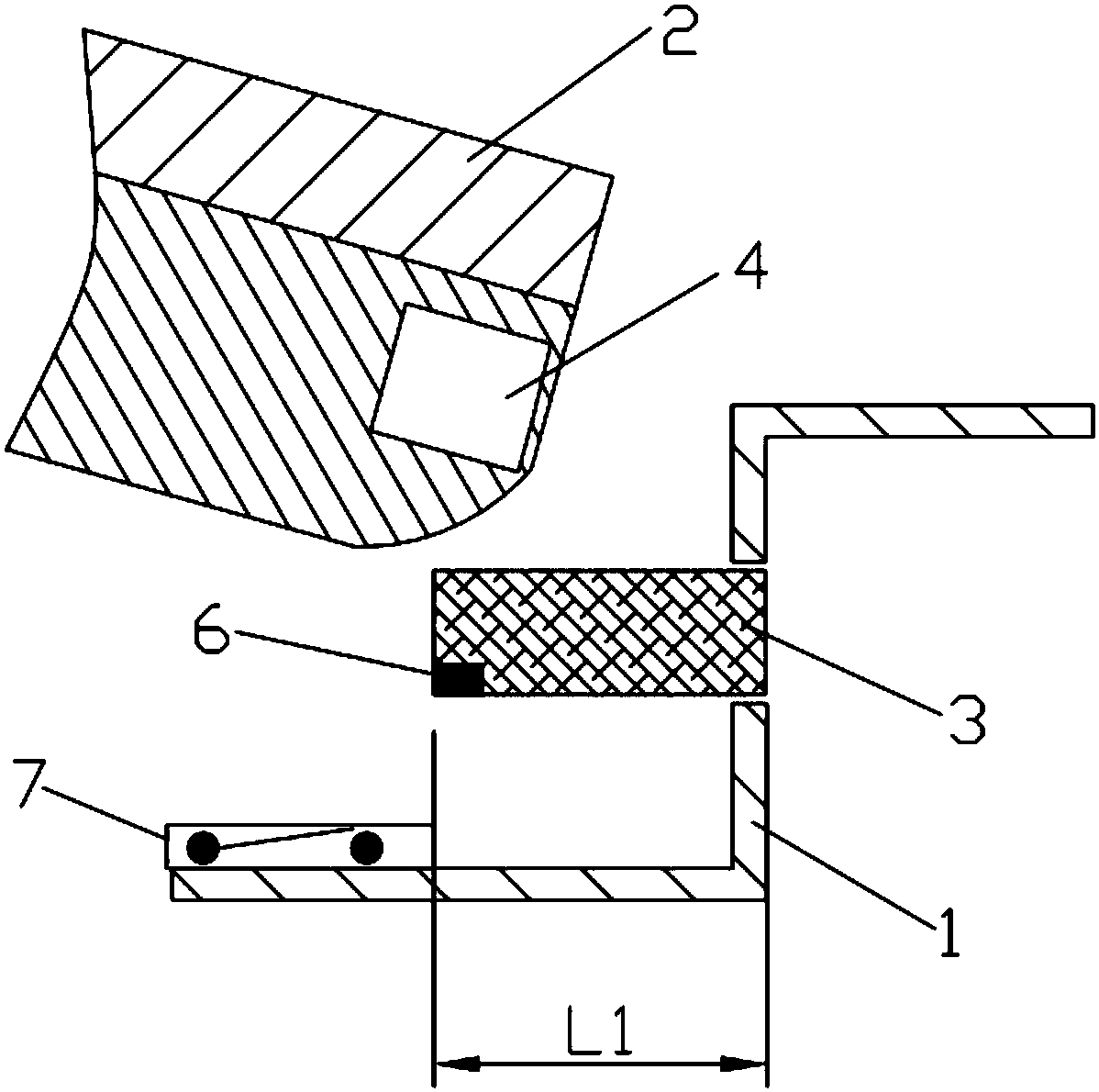Washing machine door lock detection structure and method
A detection structure and detection method technology, applied in the field of washing machines, can solve problems such as poor safety of washing machines, door lock detection errors, etc., and achieve the effects of improving safe usability, safe and reliable work, and simple structure
- Summary
- Abstract
- Description
- Claims
- Application Information
AI Technical Summary
Problems solved by technology
Method used
Image
Examples
Embodiment 1
[0034] Such as Figure 1-Figure 2 As shown, this embodiment provides a preferred washing machine door lock detection structure, which includes a control panel base 1, one side of the control panel base 1 is rotatably connected to the upper cover 2, and a door lock lock is installed on the control panel base 1. The tongue 3 and the upper cover 2 are provided with a lock hole 4 matched with the lock tongue 3. When the upper cover 2 is closed, the controller can control the lock tongue 3 to extend into the lock hole 4, thereby locking the upper cover 2. This structure also includes a detection switch for detecting the extension state of the lock tongue 3. When the upper cover 2 is not closed in place, there is no obstacle in the extension direction of the lock tongue 3, so it can be fully extended. At this time, the detection switch will go up. The cover 2 unlocked signal is sent to the controller, and the controller controls the washing machine to give an alarm to remind the use...
Embodiment 2
[0040] This embodiment proposes another door lock detection structure of the washing machine, which is basically the same as the door lock detection structure described in Embodiment 1, the difference being that the detection switch is different.
[0041] Such as Figure 3-Figure 4 As shown, the detection switch of this embodiment includes a magnet 6 arranged at the extended end of the deadbolt 3 and an induction switch 7 arranged on the control panel base 1. Here, the induction switch 7 is located in the extension direction of the deadbolt 3 and senses The horizontal distance between the switch 7 and the fixed end of the deadbolt 3 (that is, the exit of the mounting hole) is L1. When the lock tongue 3 is not blocked and the extension length reaches L1, the magnet 6 closes the induction switch 7, and the induction switch 7 feeds back a signal that the upper cover 2 is not locked to the controller, and the washing machine does not run; and when the lock tongue 3 is in contact w...
Embodiment 3
[0044] This embodiment proposes yet another washing machine door lock detection structure, which combines the structural features of Embodiment 1 and Embodiment 2. The detection switch includes both an electromagnetic switch 5 and an inductive switch 7 .
[0045] Specifically, such as Figure 5-Figure 6 As shown, an electromagnetic switch 5 is provided on the inner end surface of the lock hole 4, a magnet 6 is provided on the protruding end of the deadbolt 3, and an induction switch 7 is provided on the control panel base 1 at the same time. When the upper cover 2 is closed in place, the lock tongue 3 extends into the lock hole 4, and when the length reaches L (0<L<L1), the electromagnetic switch 5 is triggered. At this time, the door lock is locked, and the electromagnetic switch 5 feeds back the locking signal To the controller to control the normal operation of the washing machine; when the upper cover 2 is not closed in place, the lock tongue 3 can be fully extended, but i...
PUM
 Login to View More
Login to View More Abstract
Description
Claims
Application Information
 Login to View More
Login to View More - Generate Ideas
- Intellectual Property
- Life Sciences
- Materials
- Tech Scout
- Unparalleled Data Quality
- Higher Quality Content
- 60% Fewer Hallucinations
Browse by: Latest US Patents, China's latest patents, Technical Efficacy Thesaurus, Application Domain, Technology Topic, Popular Technical Reports.
© 2025 PatSnap. All rights reserved.Legal|Privacy policy|Modern Slavery Act Transparency Statement|Sitemap|About US| Contact US: help@patsnap.com



